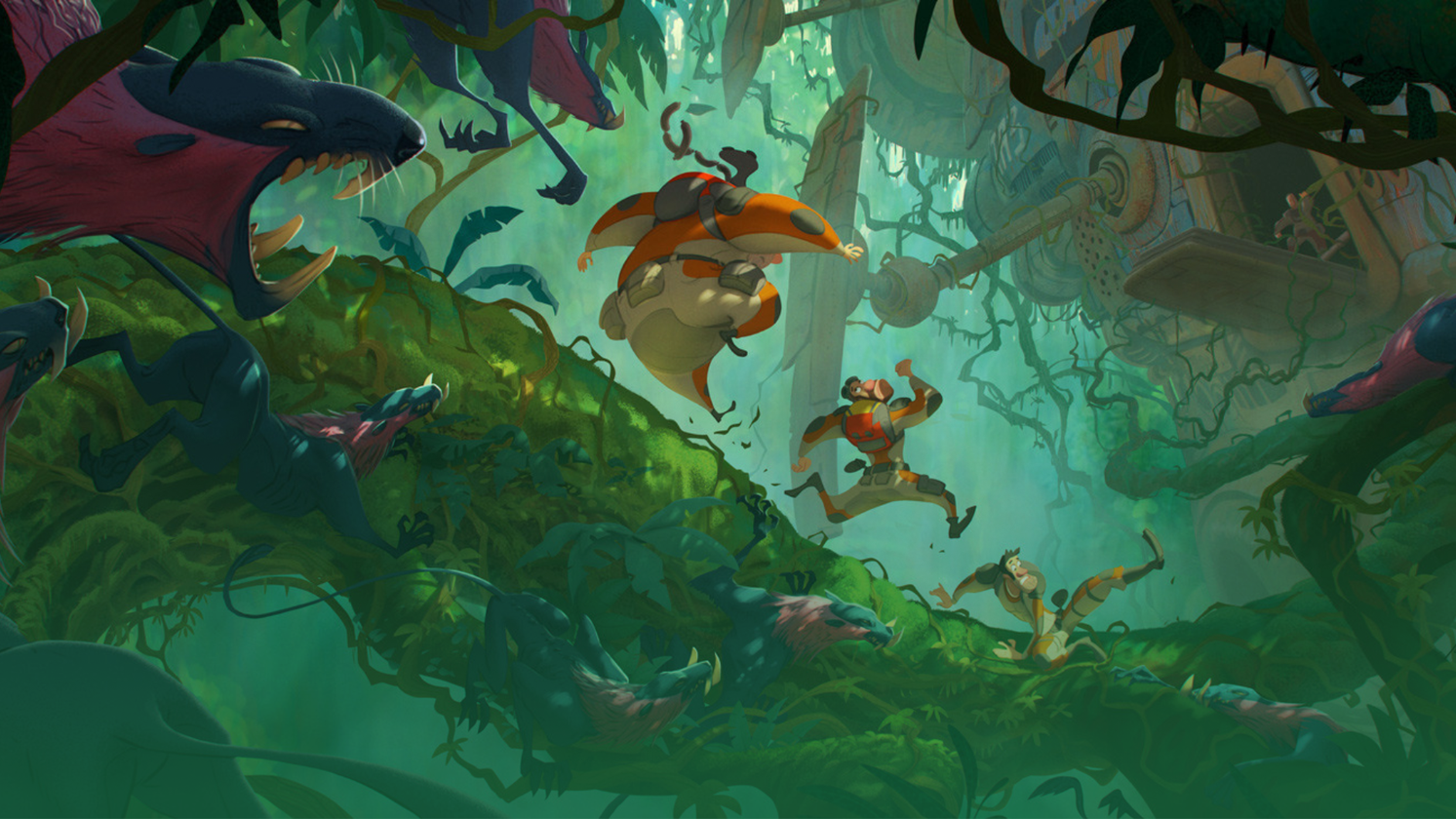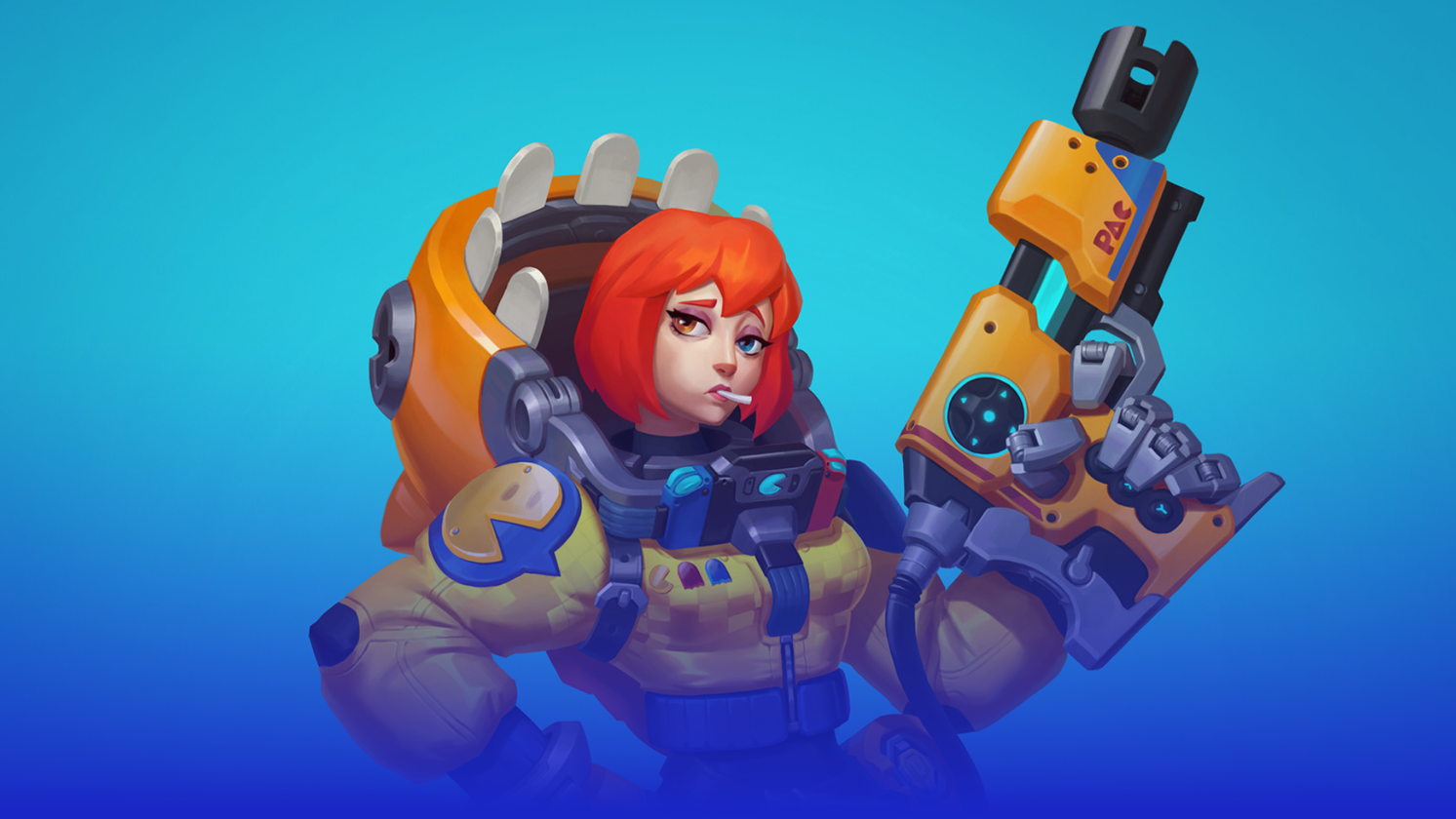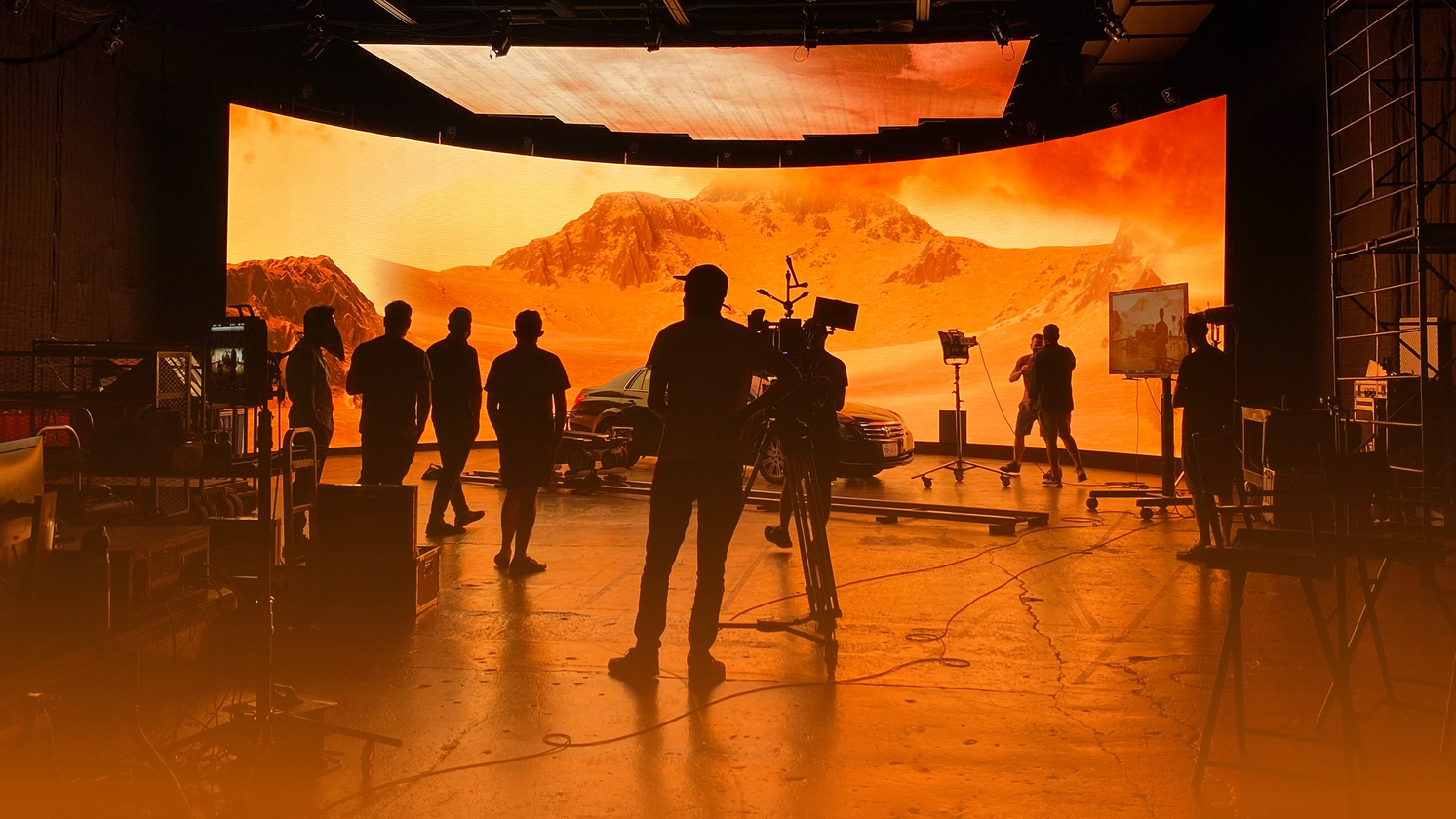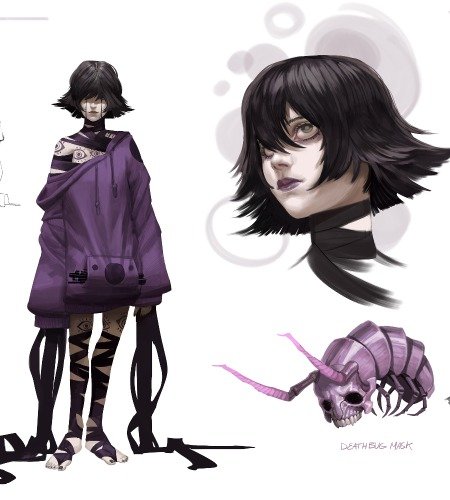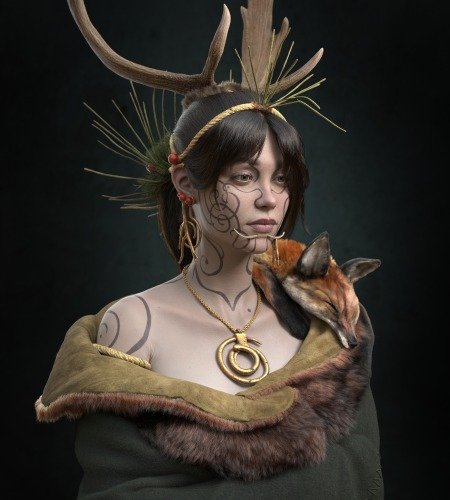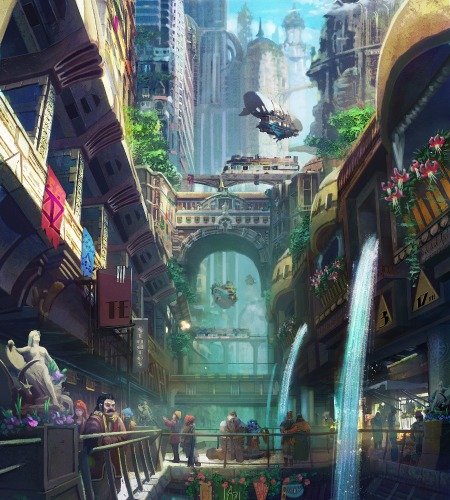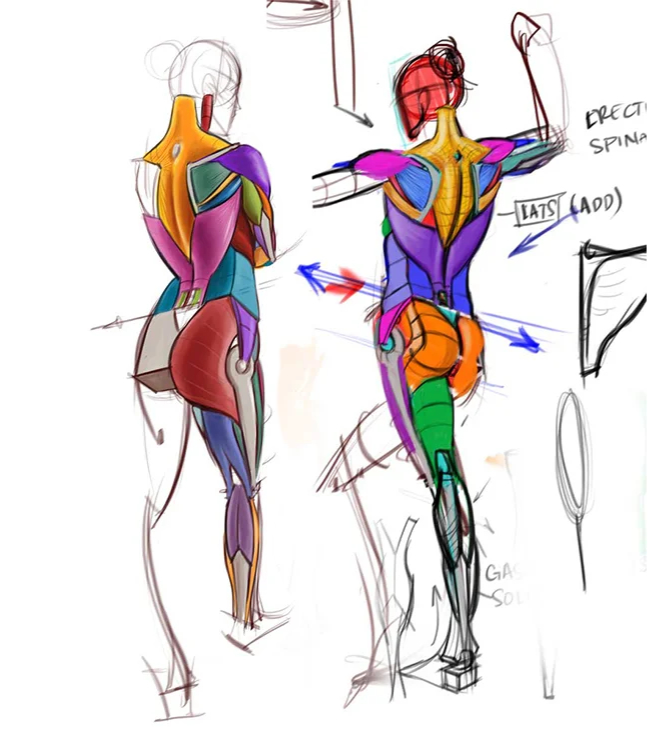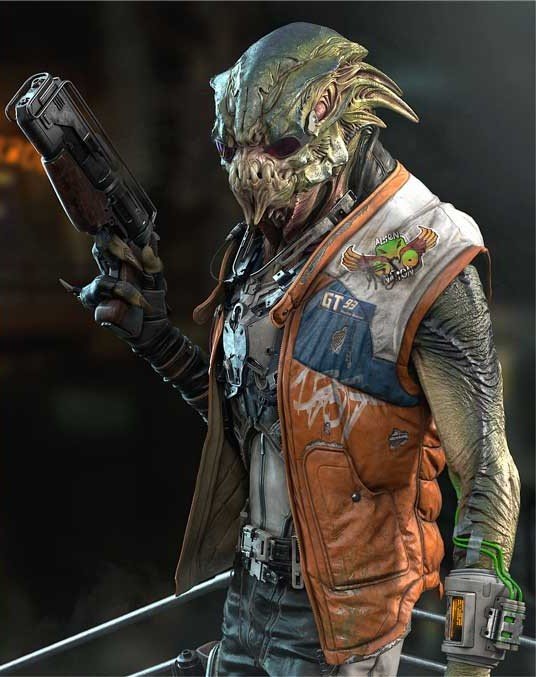Tips & Tricks on Character Rigging
Phung Nhat Huy, a 3D artist from Vietnam, gave some tips on different aspects of character rigging.
Introduction
My name is Phung Nhat Huy (you can call me Huy), from Vietnam. I went to Lasalle College of the Arts in Singapore to study and graduated with a degree in Animation Art in 2014. Currently, I’m working as a senior rigger/TD in Omens studio, Singapore, and have been working in the animation industry for 3 years.
Ever since I was in college, I’ve always had a passion for bringing appealing characters to life. Initially, I just wanted to have a good rig so I can animate my characters without worrying about things such as flipping or bad deformation. Rigging was never easy to learn because it involved a lot of technical problems solving and step-by-step tutorials were not reliable in helping me understand it. However, the more characters I rig, the more I understand how rigging works. And the more I understand how rigging works, the more I loved the entire rigging process. Eventually, I decided that rigging was going to be my career which allowed me to solely focus on perfecting my rigs to the best of my ability and let the animators bring them to life. Solving technical problems and seeing nice deformations on my characters have always brought me tremendous pleasure. In my spare time, I also love watching movies, cooking, playing chess, and video games.
For the past 3 years with Omens Studio, I have been involved in various projects ranging from animated TV series, short films, AR games, and commercials such as Leo the Wildlife Ranger, Gnome, Tales of Christmas 2017, and more… I am currently working on some exciting, unannounced projects with the studio as well as a few personal projects that I intend to kick start in my spare time this year.

Modeling the Character
The rig was created entirely from scratch using only Maya native tools with the exception of Michael Comet’s PoseDeformer plugin, which was used to drive some of the cloth-backed Blendshapes for the hoodie. The model was designed and modeled by my girlfriend, Jamie. You can check out her amazing work here.
There are lots of cool techniques, tips & tricks that I have learned from both Nico and Wade, in particular, Nico’s ribbon spine and Wade’s Blendshape method. What I liked about their workshops was that they were not heavily pre-planned. Nico and Wade made mistakes occasionally and because of that, I could see the way they troubleshoot and correct their mistakes which turned out to be incredibly helpful for learning how to problem-solve. On top of that, their weekly feedback was highly constructive and insightful.
Challenges, Tips & Tricks
As with most personal projects, I try to push myself, attempting to try out something I have never done before so I definitely have met many challenges. In particular, rigs for the hoodie and boot as well as the layering of different deformers for the facial rig. Although there were a few extra features that I have added to my rig that was not covered in the workshops, I was able to apply some of the techniques taught there and came up with my own solutions.
Nico and Wade’s class was very different from each other as one focused on body mechanic rigging while the other focused on facial rigging. These techniques, however, can be applied to any rigging situation. They both did an excellent job of explaining the concepts behind the techniques.
Generally, most scripts I used were scripts I had written myself which includes TD_blendshapeAssistant to assist me in creating Blendshape and TD_microControl to generate microcontrollers on the character face. There are also a few one-off scripts that I wrote to simply automate some tedious processes such as generating helper joints in multiple areas.
Other than that, I used Comet Scripts. They are a bunch of cool utility scripts from Michael Comet that can help to speed up processes such as naming, orienting joints, etc… Another small but cool script that I used was sk_attrShift for rearranging attributes in the channel box.

Rigging the Face
That is indeed a big challenge, especially in a personal rig where my intention was to add as many features as I can on it. Besides following Nico & Wade’s recommendations, I also consulted various animators to know their workflow and opinions, thereby allowing me to create a more efficient controller layout. In the final rig, I decided to simplify by categorizing controllers into 3 levels basic, midlevel, and micro-level controllers. Animators can easily choose to hide or unhide controllers of different levels based on their needs at different stages of the animation. This will prevent them from being overwhelmed by too many controllers at once.
Breakdown of My Beet Rig
RIBBON SPINE
Although there are many different setups for the ribbon spine, the method presented in Nico’s workshop was one of the best because it allows the spine to rotate in both the forward and reverse direction, making the spine deformation natural and organic.

I also applied the same technique to the arms and legs, which gave me easy setup for bendy and arm twist.

AUTO CLAVICLE
In the past, I struggled with finding a solution to achieving an automatically driven clavicle for arms due to its cyclic nature. The ink arm is supposed to drive the clavicle. Yet at the same time, the clavicle is the parent of the ink arm, therefore causing a cycle. Nico has provided a simple solution – add another in chain purely to drive the clavicle but not be driven by it.

This is an extremely useful technique that can be applied to not just the clavicle but the boot rig as well, which you will see later on.
THE RIGGING OF THE BOOTS AND CLOTHES
Creating a rig for the pants and hoodies were relatively straightforward. I treated the hoodie as a long dress with individual controllers that were driven by the leg joints. The lucky thing about the hoodie was that it didn’t have to react to the twisting motion of the leg, thus it was only driven by 2 rotation axes, significantly reducing the gimbal lock problem in Euler rotation.

I also added a blendshape to subtly change the silhouette of the sleeve when the arm is lowered to make it more appealing.

With regards to the boots, I could have easily settled for a simple copy of the legs’ skin weights to the boots themselves. However, I decided to take it further by adding some sort of fake collision with the leg as well as a sense of ‘looseness’, as if the boots are independent of the leg like in real life.
This proved to be quite a challenge and it took me a few days to solve it. I used the same concept as the auto clavicle setup which was to create a separate leg rig just for the boots. I used the angle between the leg and the foot joints to drive the joint chain of the boots. That set up allowed me to create an offset and the sense of ‘looseness’ mentioned earlier that would work in any poses.

Another addition to the boots was the inclusion of individual ribbon rigs on each strand of shoelace such that these shoelaces would be able to effortlessly slide on the surface of the boot tongue when required.

DEFORMATION
The most important aspect of any rig should be its deformation because it will be what the audience sees. If the deformation is bad, a rig will ultimately still be considered a bad rig regardless of its complexity.
There are many different methods to improve the deformation of a rig or to create an illusion that there exist muscles and bones underneath all those polygons. These methods can vary from technically expensive ones such as muscle and cloth simulations over a set of muscle rigs to cheaper ones such as blendshapes and the implementation of helper’s joints. Nico has shown some really cool techniques to create helper joints that were able to significantly improve the rig’s deformation and I have therefore attempted to apply them wherever I could.



In addition to that, I gave myself a small challenge which I thought would be fun to try out. I wanted Beet’s body to be able to deform in 2 modes. One would be a rubbery cartoony mode and the other would consist of a more ‘realistic’ mode with clear distinctions between the upper body and the hip when Beet bends to the side. I achieved this by adding a set of helper joints on each side that are driven by the accumulation of rotation values from the spine joints.

The best thing about using helper joints to help deformation is its transferability. Unlike blendshapes or simulations whereby there is no easy way to transfer these deformations onto another mesh, helper joints allow me to copy skin weights from one mesh to another with the criteria that they are bound to the same set of joints. During this rigging process, the model was updated several times to improve on topology. With the employment of helper joints, transferring deformation between the older models and the updated ones became a seamless process.
FACIAL RIGGING BREAKDOWN
I started with a set of 44 blendshapes based on Wade’s instructions, of which closely followed the FACS system. From there, I proceeded to split them into four parts – left, right, up, down depending on specific requirements and facial movements. In total, I have generated 78 basic facial blendshapes. On top of that, I created a few corrective shapes meant to solve any conflicts, should they arise, when multiple blendshapes are combined.
All these Blendshapes were then attached to the rig. They were driven by simple controllers and SDK.

After that, I added joint-based rigs for areas such as the jaw, hairs, ears, and noses. I also added joint-based rigs for the upper and lower lips to roll in and out on top of existing blendshapes. The teeth and tongue rigs are also joint-based.

One of the best techniques I have learned from Wade was the eyelid set-up which is based on Marco Giordano’s cartoon eyelid method. This set up allows for great flexibility in shaping the eyelids while at the same time keeping the lids rolled tightly around the eyeballs. At this point, the basic set up for the face is done.

Next, I added additional joint-based controllers on top of the facial rig that allow me to push the rig further if required. These controllers were able to stick to the face surface when it was deformed by the initial rig.

Following this, I added a lattice to deform the entire head for squash and stretch function.

Finally, I used Kimon Matara’s method to set up the sticky lips. The great thing about this method is that I can always add this feature onto my final rig without affecting any of my previous setups.

Overall, it was a long but enjoyable process. I have learned a lot and am really happy with the final result.
Final Thoughts
As rigging is a very technical career path, I strongly believe that one should view it as both a form of science and art. Be skeptical of any information that is presented to you, and always put it to the test to make sure that the method you’ve learned is working. If it’s not working, make sure to find out why and the flaws that method brings. Be curious and always explore new methods, even a bad rig can contain some great tricks to learn if one is willing to study it.
On the artistic side, anatomy is the utmost important thing to learn when it comes to rigging characters. You can’t deform a character well if you don’t understand what’s going on underneath its skin. Most importantly, never stop learning. There is always more to learn and the more you know, the better you get at problem-solving and coming up with creative solutions. Overall, besides new techniques, tips, and tricks, Nico & Wade has taught me a lot in terms of problem-solving and has also helped solidify my understanding of rigging in general. I’m really grateful for what I have been able to learn in these two excellent courses and I am looking forward to attending more technical related workshops from CGMA in the future.
For more information on CG Master Academy, and the Character Facial Rigging for Production course, and the Rigging Techniques: Cartoon to Realistic course, please visit the course page on the CG Society Workshops, or email [email protected].


